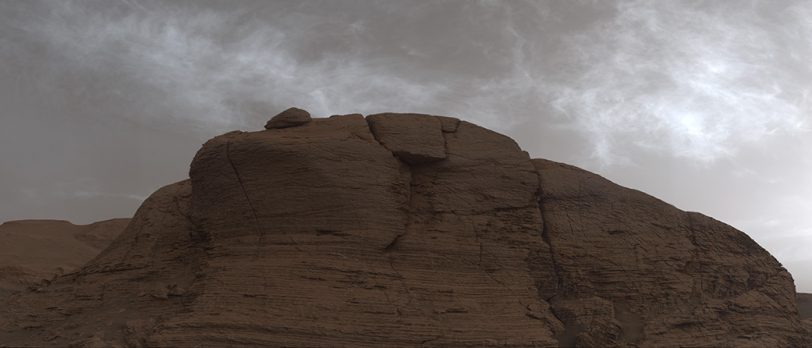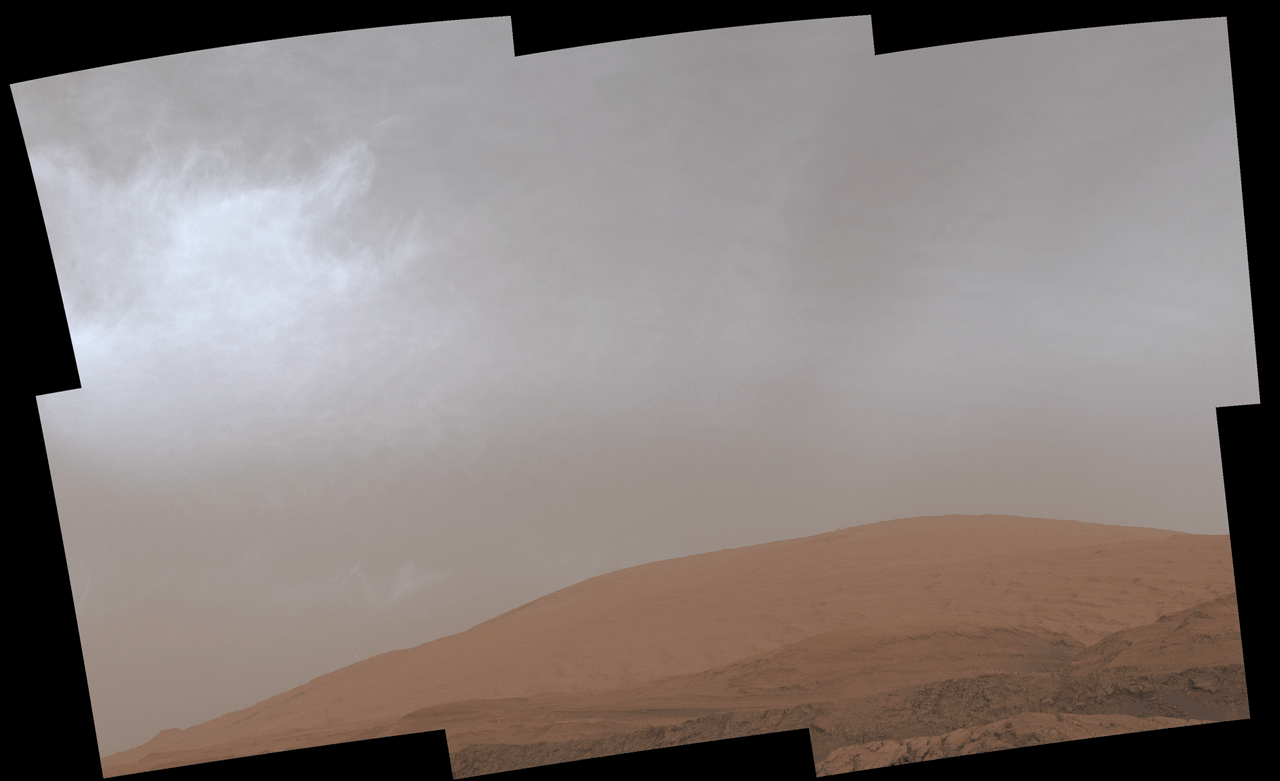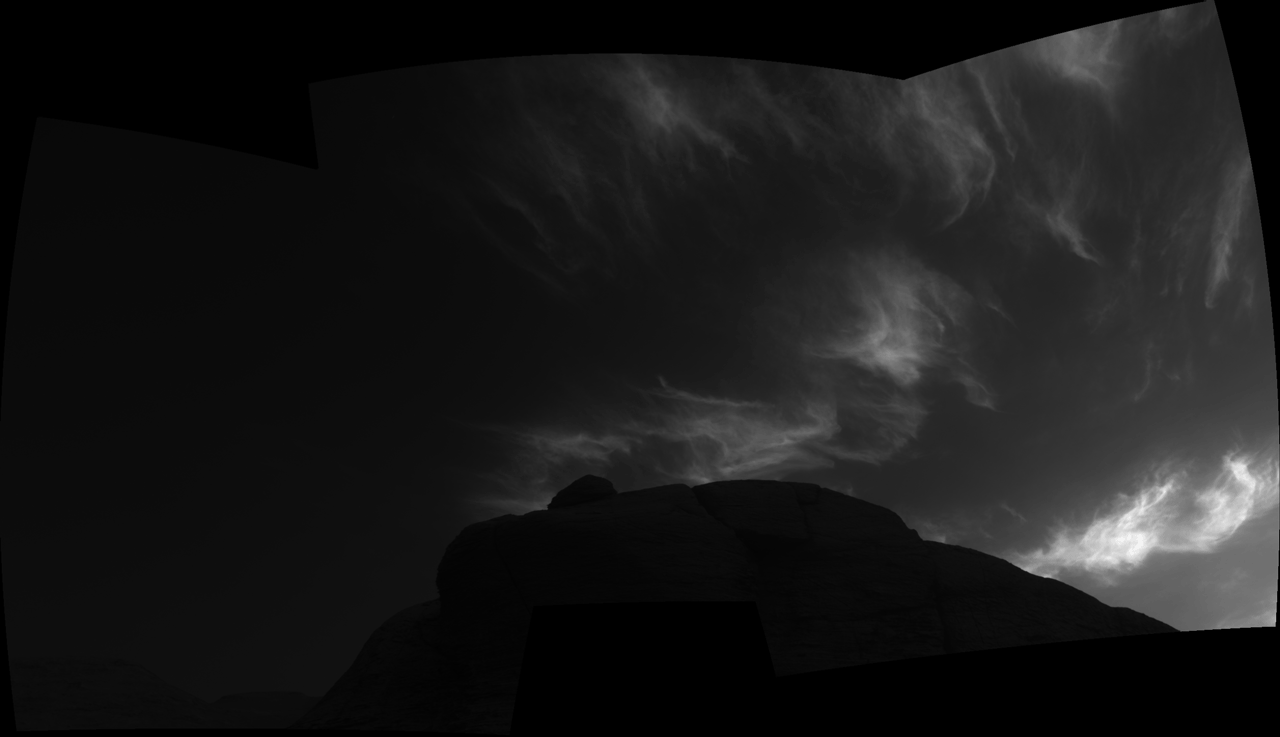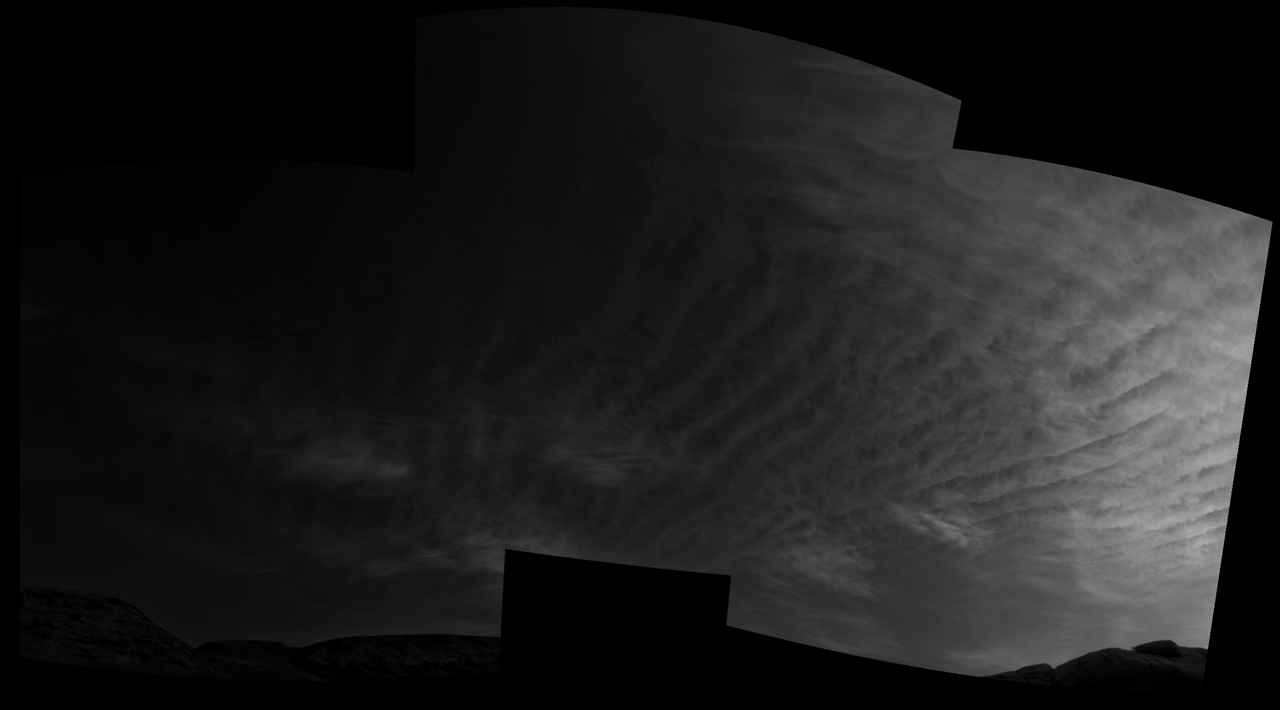Although Mars has a lot of wind and dust devils, it’s not really famous for its clouds like Earth is. This is one of the reasons why NASA’s Curiosity rover’s images of Martian clouds are so beautiful.
Scientists had noticed clouds forming on Mars earlier than expected, so they waited until this year to see if Curiosity could photograph the ethereal formations, which took on some very colorful characteristics.
“More than just spectacular displays, such images help scientists understand how clouds form on Mars and why these recent ones are different,” NASA said in statement on Friday.
This year, Curiosity captured a series of cloud views. In GIFs NASA put together, you can see the ghostly wisps moving. Some are examples of noctilucent “night-shining” clouds made of water ice. “Viewed just after sunset, their ice crystals catch the fading light, causing them to appear to glow against the darkening sky,” said NASA.
Noctilucent clouds can be found on Earth as well. Last year, researchers in the Arctic observed them in our upper atmosphere. They occasionally wander and become visible further south.
The earliest cloud arrivals were discovered to be at higher altitudes, according to researchers. Water ice clouds, like the ones we see on Earth, would make up a typical Mars cloud. But these high-flying clouds might actually be made of dry ice, frozen carbon dioxide. The idea is still under investigation.
Color images of scenic “mother of pearl” clouds glistening with an iridescent glow were also included in Curiosity’s Martian cloud scrapbook.

“If you see a cloud with a shimmery pastel set of colors in it, that’s because the cloud particles are all nearly identical in size,” said atmospheric scientist Mark Lemmon with the Space Science Institute in Colorado. “That’s usually happening just after the clouds have formed and have all grown at the same rate.”
These ethereal clouds, according to Lemmon, are “among the more colorful things” on Mars. It’s as if Mars decided it didn’t want to be labeled the “red planet” any longer. As the pinks and blues and greens of the clouds show, it’s got some range to its palette.
READ MORE: NASA Mars Spacecraft Snaps Amazing Image of Rover Far Below







